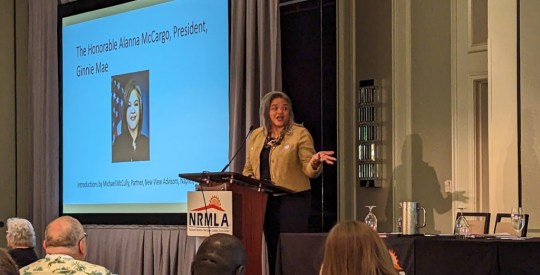Via the WSJ, admission of loan fraud that I don’t think is a one-off sort of case — not in California, and not for any lender holding option ARMs on its books. But first, a case of whocouldanode (fist pound to Calculated Risk, for the term):
…many borrowers submitted loan applications that overstated their financial condition, making it more likely that they won’t be able to afford even a modified loan. FirstFed figured that some borrowers had fudged their incomes and tried to protect itself with tighter credit standards. “But we were shocked by the magnitude of the lies,” Ms. Heimbuch says. “You expect a 20% fudge. You don’t expect 500%.” [emphasis added]
Really? And why not? When I hear the CEO of a bank specializing in option ARMs underwritten with stated income criteria say they’re surprised by the extent of fraud in their loan book — one that’s done this sort of lending for 20+ years, like FirstFed, no less — it underscores to me just how difficult it has been for all parties to come to terms with the scale of fraud perpetrated throughout the entire system. And we’re talking systemic proportions, folks. There’s a reason that analysts at UBS think almost half of the 2006 vintage of option ARMs is headed for the trash bin, and it’s not because borrowers — especially in California — are shining paragons of virtue here. Which brings us to the back half of the same WSJ story. I almost don’t know what to say about the below:
Dien Truong, a 35-year-old, water deliveryman, pulled out $156,000 in cash when FirstFed refinanced the $628,000 mortgage on his Richmond, Calif., home in 2005. Mr. Truong used the money as a down payment on another home and turned the FirstFed home into a rental property. But the $2,500 a month he collects in rent is no longer enough to cover his mortgage payments, which have climbed to roughly $5,100 from $1,618. FirstFed offered to refinance him into a new loan with payments of roughly $4,250 for the first five years, but Mr. Truong says he can afford only to pay the $2,500 in rental income. Because he has been making the minimum payment, his loan balance has climbed to more than $690,000, which is more than the home is worth. “I’ve been a good customer,” says Mr. Truong, who hasn’t made a loan payment since March. “This time my credit will be screwed up for good.” His loan application shows that Mr. Truong and his wife earn $165,000 a year, more than double their actual income, says Katrina Vizinau, a housing counselor with Community Housing Development Corp. of North Richmond. Like Mr. Truong, she says, many borrowers say they didn’t read the application until later.
Good Lord. The guy drives a Sparkletts truck for a living, and likely took out not one, but two fraudulent loans by lying about his income. And he’s “been a good customer.” If by “good customer,” we mean Truong was complicit to loan fraud — twice — then he certainly is a good customer. If by “good customer,” we mean to say was willing to go along with the ruse, or forget his ethics if a broker told him not to worry about the income number on the application, or sign for a loan without looking at what he was signing, or convince himself that an income of well less than $100K could justify two mortgages, one of which was well north of $600K — then I’d suppose Mr. Truong is a “good customer.” I’d use a different characterization, myself — both for the bank that made the loan, and for the borrower that all too gladly took it. Much worse yet, something tells me that California counseling and housing agencies these days are getting bombarded with water deliverymen who say they “didn’t read the application until later” right about now. If you wonder why I’m sour on banks holding large option ARM portfolios centered in California, look no further than the above anecdote.



